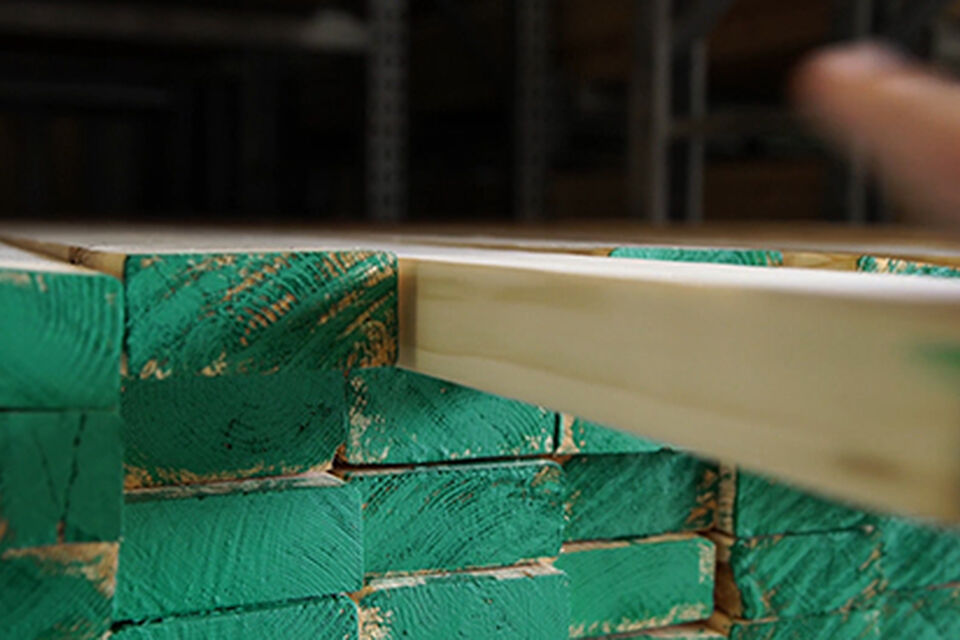By mid-June, buying slowed considerably as lumber prices hit their zenith, marking the beginning of a hard correction to a market that seemingly had no end. Most attribute the decline to the fact that prices were not conducive for starting new projects and with Covid-19 mandates removed, many American’s have channeled attention away from home buying and improvements (at least, for now) and back to their pre-pandemic activities. With the lack of interest, prices are dropping, more material is becoming available and trucking is easing up. Market anxiety is now focused on how long and how far the correction will last, as the higher things go, the farther they can fall. Taking that into consideration, there are a few variables that may prevent a free-fall from occurring, most notable being when buyers will need to jump back in to replenish and how much material they will require. Despite the slow-down in lumber buying, homebuilding and remodeling continues to be strong and the general consensus is that demand hasn’t really gone away as much as gone on hiatus, due to the ridiculously sky-high prices and shortages of lumber and panels. With this in consideration, the mindsets of lumber buyers during a falling market is to withhold from purchasing for as long as possible, but even ordering the bare minimum can be a risk in itself during this particular correction as what is bought today at today’s prices could be over market pricing by the time it arrives, negating the profit that could have been realized. Also, if consumers see prices drop as far and as fast as they are now and suddenly want to start up their projects again, we could be setting ourselves up for an “all-in” market, setting a strain back on supplies, trucking and thus reversing the market. In the meantime, we need to advise that it is a volatile market, but we anticipate (and hope) that July will bring us some respite and edge down pricing to more reasonable levels. Please be sure to consult with your Shepley sales person on any current or upcoming jobs so that we can best prepare you for your needs during this time.
It’s a phrase that’s been shelved now that we have (more or less) gotten back to our normal ways of living, but one has to wonder what the “new normal” will be for lumber pricing. Certainly, for pricing to have escalated to the point where most of us couldn’t comprehend the cost of a stud or sheet of CDX, we can point to the pandemic and all of its ills for what it has caused for demand on housing, the subsequent strain on building materials, the lack of the volume (and willingness) of laborers to return to work and the lack of drivers and rigs to transport goods. As life has now generally gotten back to the old normal, we would expect that, in short time, the building industry (and, most especially, the cost of building materials) will get back to normal as well. But will they? Our price escalation was brought on by a high demand for home building and home improvement, and analysts are adamant that that demand is still there (with many estimating solid sales through 2025), but each of the constraints listed above will not be fixed overnight, most especially when we still have to contend with normal issues that would periodically ramp up pricing, such as natural disasters and government tariffs. Undoubtedly, we’ll see fits and starts on market corrections as we are work our way back to learning what our next new normal is going to be but, at this time, it is unlikely that we will get back to pre-pandemic pricing any time soon. Rather, the new waterline for what will be considered “normal” pricing has yet to be realized for lumber, plywood, pressure treated (and just about every other category of building materials) and will likely take some time as it goes through its periods of price discovery (the process of setting an agreeable price between buyers and sellers) before it’s accepted as the new (but “normal”) cost of building materials. As the lumber market will always be affected by supply and demand, stability and pricing will always be based upon finding the equilibrium that is suitable to that particular time period and for all of its effects. We have to keep in mind that, although current prices for those of us who have been around awhile are outrageous, they aren’t necessarily so for the younger generations currently buying or building a home. As long as consumers are comfortable consuming at today’s prices, our new normal is already here. Thank you for your business.
